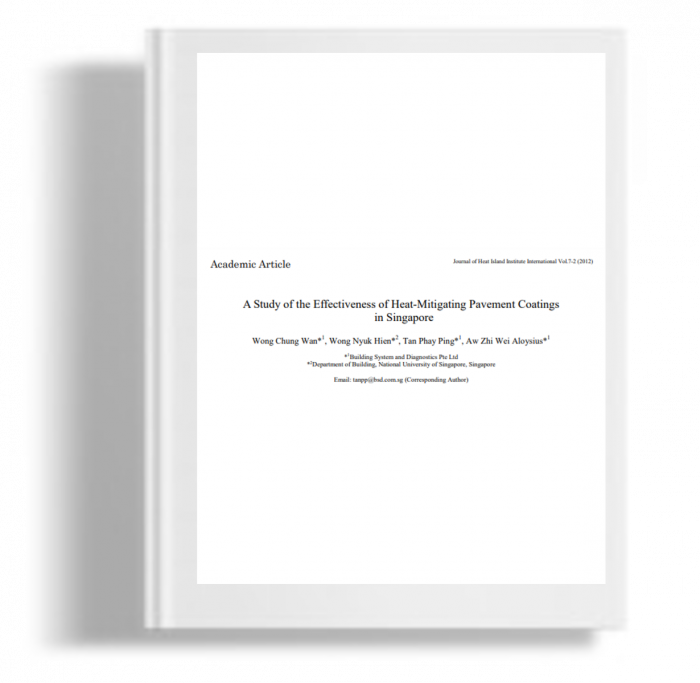Kami menggunakan cookies untuk membuat pengalaman Anda lebih baik. Untuk mematuhi petunjuk e-Pribadi yang baru, kami perlu meminta persetujuan Anda untuk menyetel cookies. Pelajari lebih lanjut .
A study of the effectiveness of heat-mitigating pavement coatings in Singapore
The primary cause of the urban heat island (UHI) phenomena is urbanization, whereby natural softscapes are replaced with hard surfaces that absorb and re-radiate thermal energy back into the environment. Asphalt roads and pavements, in particular, were found to be able to heat up to 60° C, and radiate the excess heat back into the environment. This paper highlights the effectiveness and suitability of a dark-colored pavement coating with high albedo, named PerfectCool, recently developed by NIPPO Corporation Co. Ltd, in Japan. Laboratory tests revealed that PerfectCool was able to reflect up to 81% of near-infrared red waves, had a low heat conductivity of 0.252 W/mK, and had a high emissivity value of 0.828. Throughout the duration of the controlled mock-up experiment, PerfectCool consistently recorded lower surface temperatures than did concrete slabs with and without conventional paving coating. PerfectCool was able to reduce peak surface temperatures by up to 5° C. Onsite measurements revealed that PerfectCool was able to reduce asphalt-surface temperatures to about 38° C. This was a temperature reduction of up to 17° C, as compared with a normal asphalt-surface without PerfectCool. PerfectCool was able to prevent a build-up of heat within asphalt roads, preventing them from becoming a heat sink, which could prolong the service life of the asphalt surface. This is clearly supported by the low sub-surface temperatures of 34° C, 16° C lower than for asphalt roads. Potential cost savings were also determined through energy simulation using IES(ve). With the application of PerfectCool on pavements surrounding a development, a potential electrical yearly savings of 3.46% can be derived, with a highest possible monthly savings of 4.88%. On a typical hot day, the possible reduction of chiller load can be up to 7.69%.
The primary cause of the urban heat island (UHI) phenomena is urbanization, whereby natural softscapes are replaced with hard surfaces that absorb and re-radiate thermal energy back into the environment. Asphalt roads and pavements, in particular, were found to be able to heat up to 60° C, and radiate the excess heat back into the environment. This paper highlights the effectiveness and suitability of a dark-colored pavement coating with high albedo, named PerfectCool, recently developed by NIPPO Corporation Co. Ltd, in Japan. Laboratory tests revealed that PerfectCool was able to reflect up to 81% of near-infrared red waves, had a low heat conductivity of 0.252 W/mK, and had a high emissivity value of 0.828. Throughout the duration of the controlled mock-up experiment, PerfectCool consistently recorded lower surface temperatures than did concrete slabs with and without conventional paving coating. PerfectCool was able to reduce peak surface temperatures by up to 5° C. Onsite measurements revealed that PerfectCool was able to reduce asphalt-surface temperatures to about 38° C. This was a temperature reduction of up to 17° C, as compared with a normal asphalt-surface without PerfectCool. PerfectCool was able to prevent a build-up of heat within asphalt roads, preventing them from becoming a heat sink, which could prolong the service life of the asphalt surface. This is clearly supported by the low sub-surface temperatures of 34° C, 16° C lower than for asphalt roads. Potential cost savings were also determined through energy simulation using IES(ve). With the application of PerfectCool on pavements surrounding a development, a potential electrical yearly savings of 3.46% can be derived, with a highest possible monthly savings of 4.88%. On a typical hot day, the possible reduction of chiller load can be up to 7.69%.

